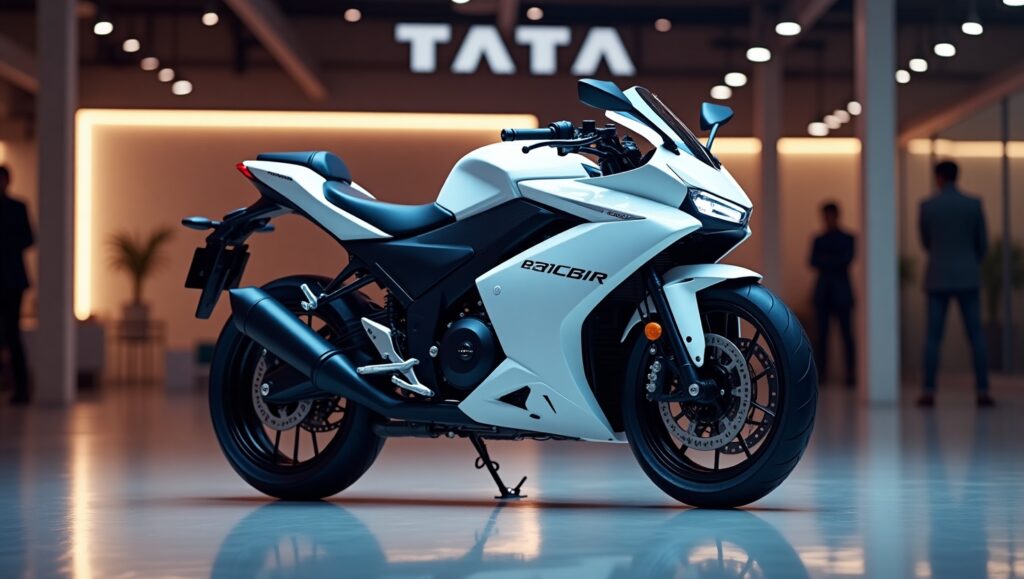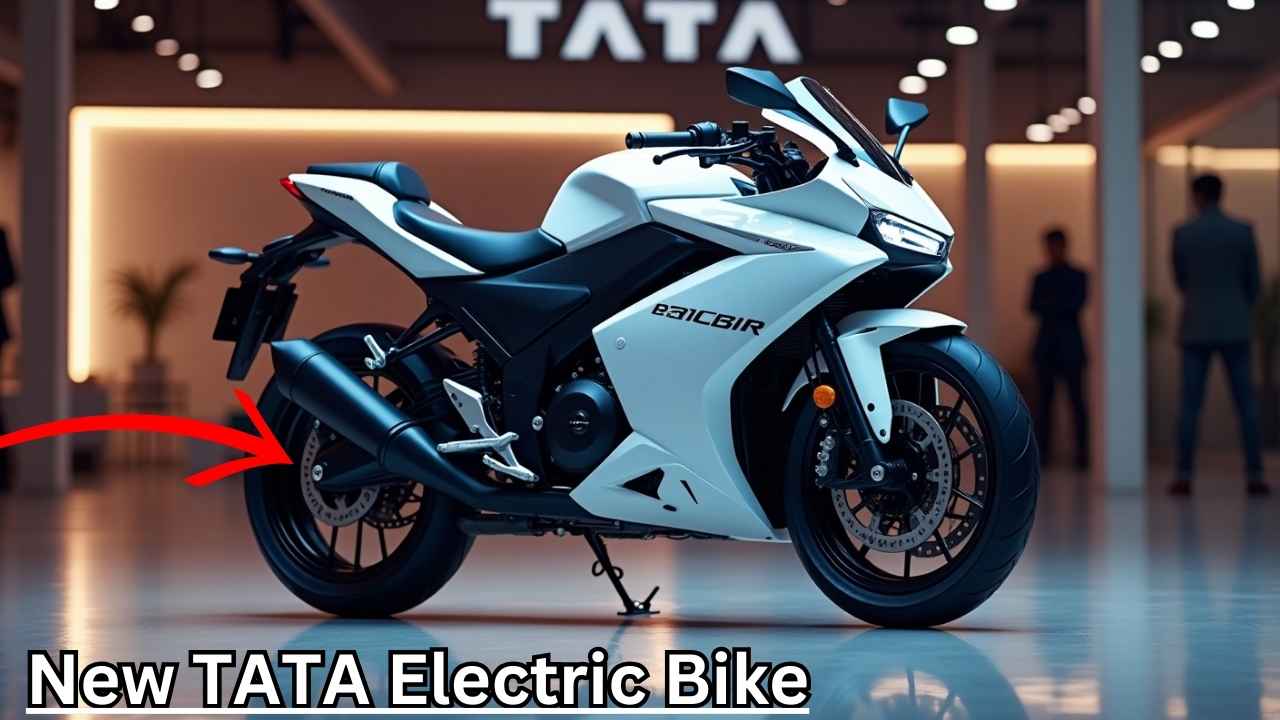New TATA Electric Bike: Tata Motors, a trusted leader in India’s automotive industry, is set to make a grand entry into the electric two-wheeler segment with its first-ever electric bike. Known for its innovation and focus on sustainable mobility, Tata’s decision to venture into the electric bike market underscores its commitment to reshaping urban transportation and expanding its electric vehicle (EV) portfolio.
This bold move by Tata Motors comes at a time when the demand for electric two-wheelers in India is skyrocketing. With a strong brand reputation, vast dealership network, and proven expertise in the EV space, Tata is poised to make a significant impact in this growing market.
The Rapid Growth of the Electric Bike Market in India
India’s electric two-wheeler market is experiencing unprecedented growth, driven by rising fuel prices, environmental concerns, and government incentives for EV adoption. Established players like Ola Electric, Ather Energy, and TVS Motors currently dominate this space.
However, Tata Motors’ entry is expected to disrupt the market dynamics. With its robust R&D capabilities, trusted brand image, and ability to deliver reliable products, Tata is uniquely positioned to appeal to a wide range of consumers. The company’s foray into the electric bike segment also signals a major milestone in India’s transition toward sustainable mobility.
What to Expect from Tata’s Electric Bike
Although Tata Motors has not officially disclosed all the details of its upcoming electric bike, industry insiders have hinted at some exciting features and specifications:
1. Sleek and Futuristic Design
- The bike is expected to feature a modern, urban-centric design with clean lines and a futuristic aesthetic.
- Drawing inspiration from Tata’s successful electric cars, like the Nexon EV, the bike will likely attract style-conscious riders who prioritize both looks and performance.
2. Impressive Performance
- Range: Expected to offer a range of 150-200 km on a single charge, making it ideal for city commutes and short trips.
- Top Speed: Estimated top speed of 80-100 km/h, balancing performance and rider safety.
- Charging Time: Fast charging capabilities could enable the bike to charge from 0% to 80% in under an hour.
- Motor Power: A mid-drive motor with a power output of 3-5 kW for enhanced efficiency and smooth performance.
3. Advanced Battery Technology
Tata Motors is expected to equip the bike with advanced lithium-ion battery technology featuring robust thermal management systems. This ensures long-lasting battery life, safety, and consistent performance.
4. Smart Features for a Modern Riding Experience
The bike is anticipated to come with a range of smart features, including:
- Smartphone connectivity for navigation, ride analytics, and remote diagnostics.
- Regenerative braking to improve energy efficiency.
- Multiple riding modes such as Sport, Eco, and City to suit different needs.
- A fully digital instrument cluster that displays real-time information like speed, battery status, and range.
Production and Localization Strategy
To keep the bike competitively priced, Tata Motors may leverage its existing EV manufacturing facilities. However, there are rumors of a dedicated production line for electric two-wheelers. The company’s focus on localization could lead to reduced costs and better quality control, with a potential plan to establish a battery production unit specifically for its electric bikes.

Expected Pricing and Market Positioning
Pricing will be a critical factor for Tata’s electric bike. Industry experts predict the bike will be priced between ₹80,000 and ₹1,20,000, positioning it in the premium segment alongside competitors like the Ather 450X, TVS iQube, and Ola S1.
Tata may also launch multiple variants to cater to diverse customer needs:
- City Commuter Variant: A budget-friendly option for everyday use.
- Performance Variant: A sportier version for enthusiasts who seek thrill.
- Long-Range Variant: Designed for intercity travel and longer commutes.
Charging Infrastructure and Service Network
One of Tata’s strengths lies in its comprehensive EV ecosystem. The company has already made significant strides in charging infrastructure through Tata Power, and this network is expected to expand further with the launch of the electric bike.
Additionally, Tata’s extensive dealership and service network will ensure easy availability, reliable after-sales service, and quick resolution of issues for bike owners.
Opportunities and Challenges
While Tata’s entry into the electric bike segment is exciting, it does come with its share of challenges. The company will need to compete with established players who already have a foothold in the market. Battery technology, range anxiety, and charging infrastructure are other hurdles that need to be addressed.
However, Tata’s strong reputation, innovative approach, and commitment to sustainability give it a unique advantage. If executed well, this bike could redefine India’s electric two-wheeler market and accelerate EV adoption.
When Can You Expect It?
Although Tata Motors has not officially announced the launch date, industry insiders suggest the bike could hit the market by the third quarter of 2025.
Conclusion: A Game-Changer in the Making
Tata Motors’ entry into the electric bike segment is a landmark moment for India’s EV industry. By combining innovation, advanced technology, and a customer-first approach, Tata aims to revolutionize urban mobility and provide an eco-friendly alternative to conventional two-wheelers.
Stay tuned for more updates as Tata gears up to unveil its first electric bike—a potential game-changer that promises to make electric mobility more exciting and accessible for Indian riders!




